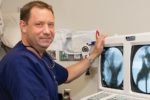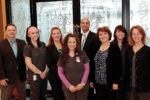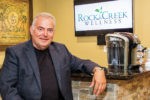MidAmerica Rehabilitation Hospital

Stronger Together
After a life-changing illness or injury, MidAmerica Rehabilitation Hospital is fully committed to helping patients regain their independence and experience life-changing results.
Story by Ann Butenas | Photography by Matt Kocourek
As a leading provider of inpatient rehabilitation for stroke, brain and spinal cord injury, along with other complex neurological and orthopedic conditions, MidAmerica Rehabilitation Hospital (MARH), located in Overland Park, Kansas and serving the entire metro area, is part of Encompass Health and has Joint Commission Accreditation.
Operating as forward-thinkers, the medical professionals and specialists at MARH plan for your discharge before you even arrive. What this essentially translates to is they already have your recovery at top of mind before you even cross the threshold. A 98-bed acute rehabilitation hospital, MARH operates as a joint venture between Encompass Health and AdventHealth Shawnee Mission and is one of 135 hospitals across the United States.
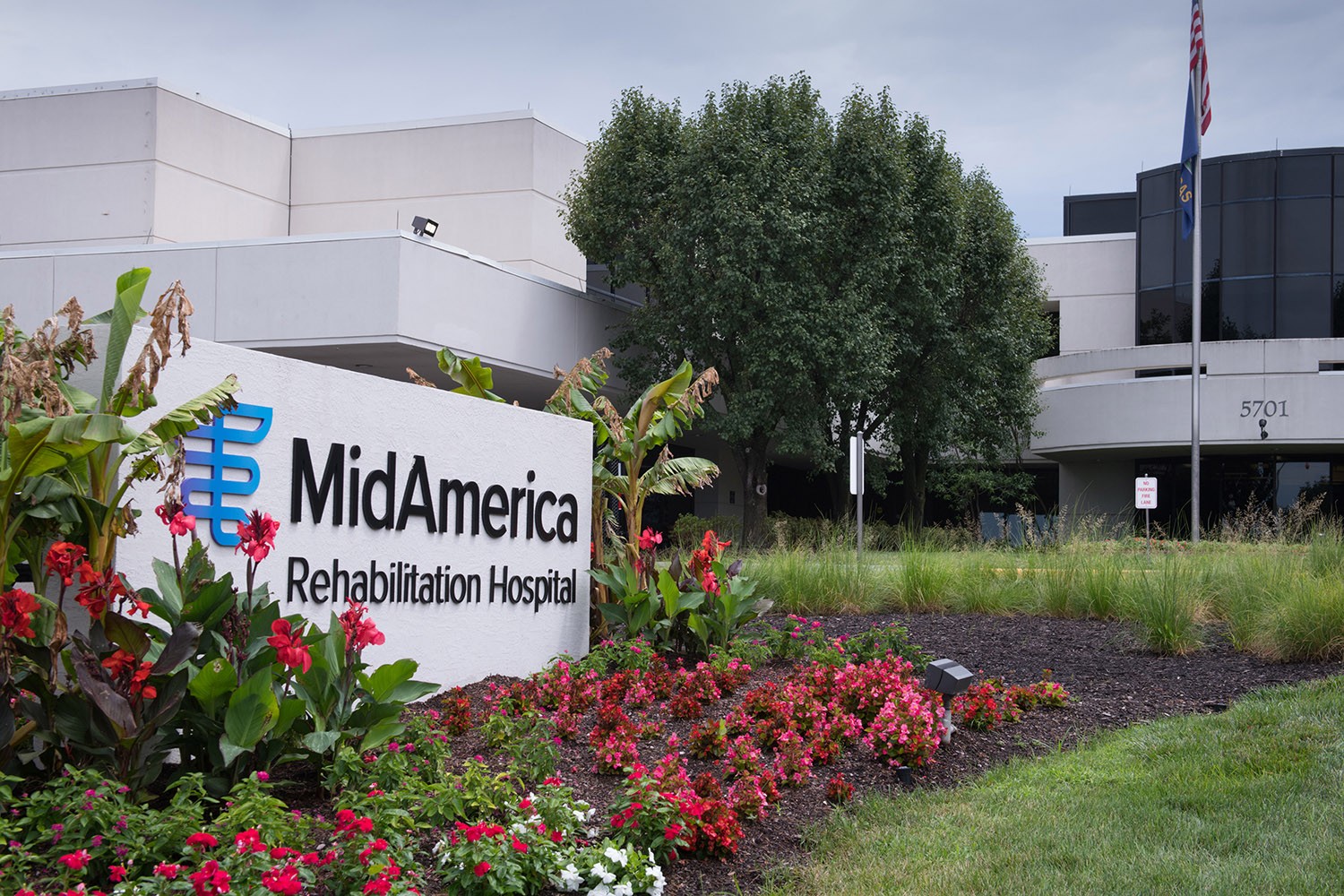
A one-of-a-kind facility, this inpatient rehabilitation hospital relies on an experienced interdisciplinary team approach when treating each patient. This includes physical, speech and occupational therapists, as well as physical medicine and rehabilitation physicians (PMR/physiatrists), certified rehabilitation nurses, case managers, dietitians and more. Each team member provides the necessary expertise, coupled with the latest in technologies, to help patients reach their goals.
While under the care of nurses, patients receive a minimum of three hours of therapy five days out of the week. Many of the nurses are specialists in rehabilitation. Additionally, patients will receive regular visits from private practice physicians who help monitor and direct the progress. What this hospital excels at is rehabilitation, achieved through customized treatment plans focusing on the physical, emotional and social aspects of each patient’s life.
The shared goal among each program available at MARH is for the patient to regain more independence while remaining an active part of his or her own care and progress to restore as much functionality as possible so a better quality of life may be achieved.
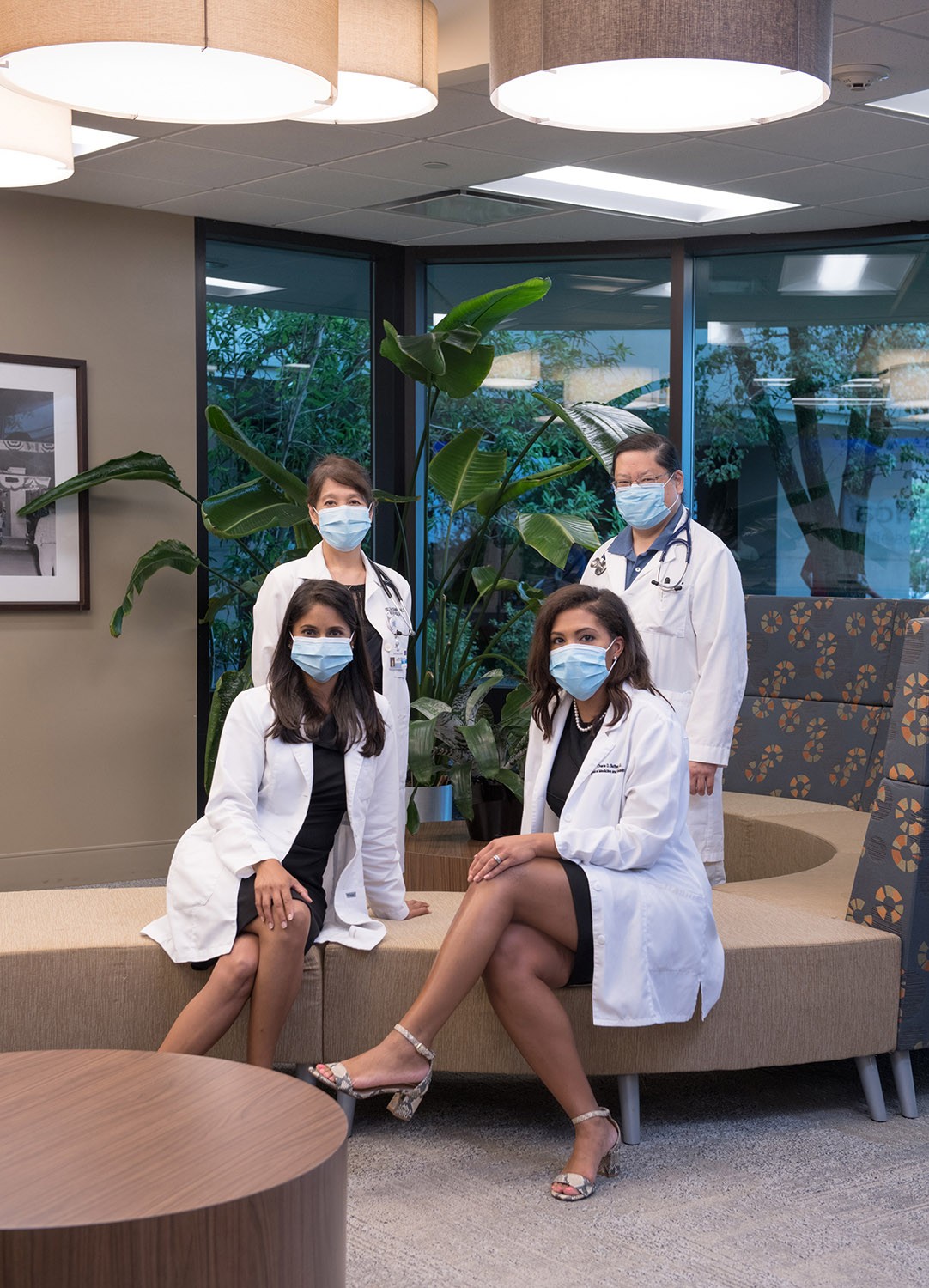
A team approach is the key to success.
There are a myriad of options for rehabilitation as related to the conditions that require it. What is essential to each patient is to follow a path that will best meet his or her individual needs. The specialists at MARH work as a team to ensure the best in care in the safest manner possible with a focus on achieving superior outcomes. This involves a variety of approaches, from the incorporation of multiple therapies, the application of expert knowledge and the implementation of the most advanced technologies, all of which elevate this hospital’s reputation for excellence in its focus on comprehensive patient care.
“We take that interdisciplinary team approach seriously to help patients achieve outcomes,” indicated Tiffany Kiehl, CEO.
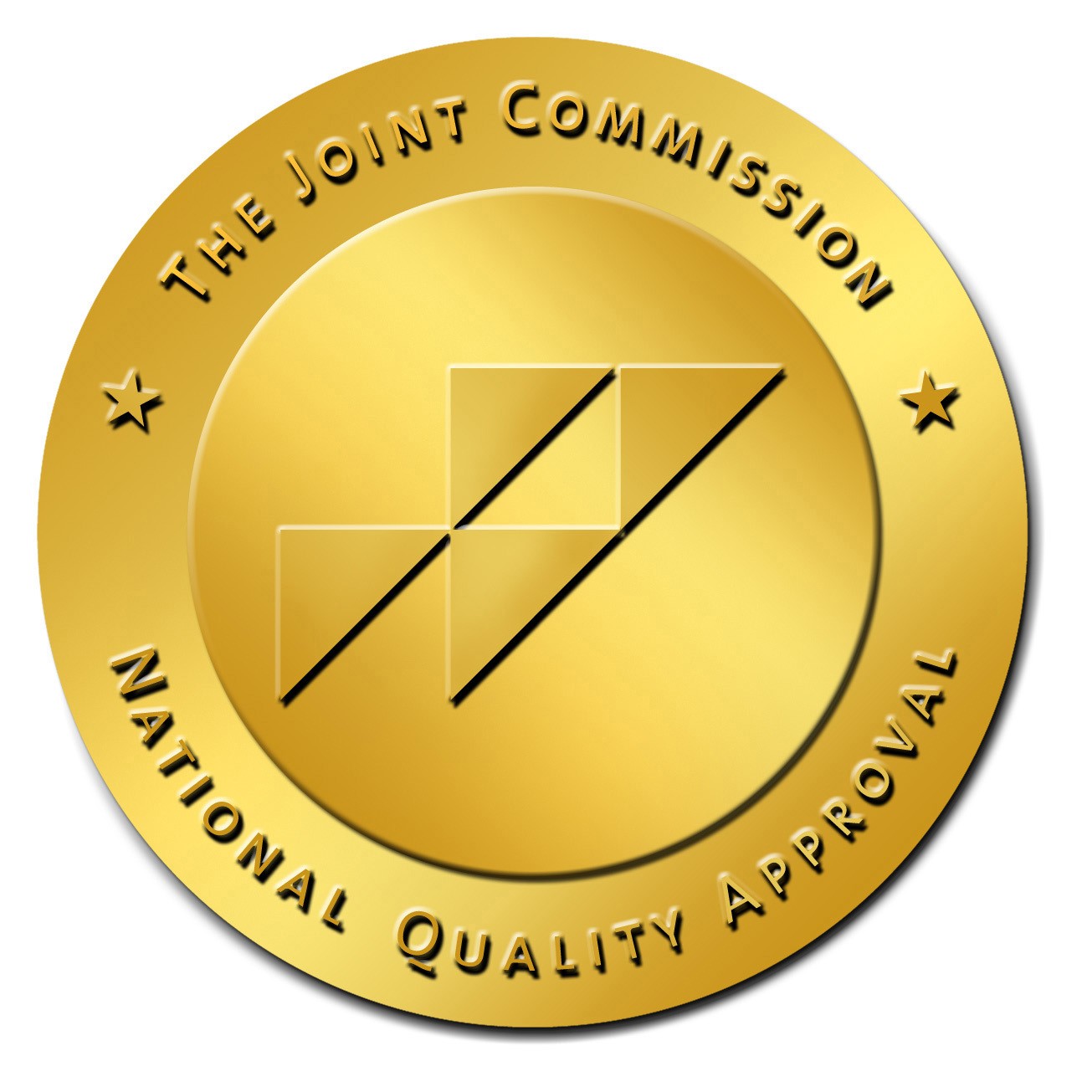 Kiehl explained that all members of the team guide, encourage and inspire patients to achieve success as they reach for their own personal goals. At MARH, each patient is encouraged and supported in reaching their goals as comfortably as possible with a team of experienced professionals who fully respect each patient.
Kiehl explained that all members of the team guide, encourage and inspire patients to achieve success as they reach for their own personal goals. At MARH, each patient is encouraged and supported in reaching their goals as comfortably as possible with a team of experienced professionals who fully respect each patient.
Award winning services.
As a leader in patient care, MARH has earned the Gold Seal of Approval™. Each of its rehabilitation programs – stroke, amputee, spinal cord and brain injury – has earned The Joint Commission’s Gold Seal of Approval® for Disease-Specific Care Certification.
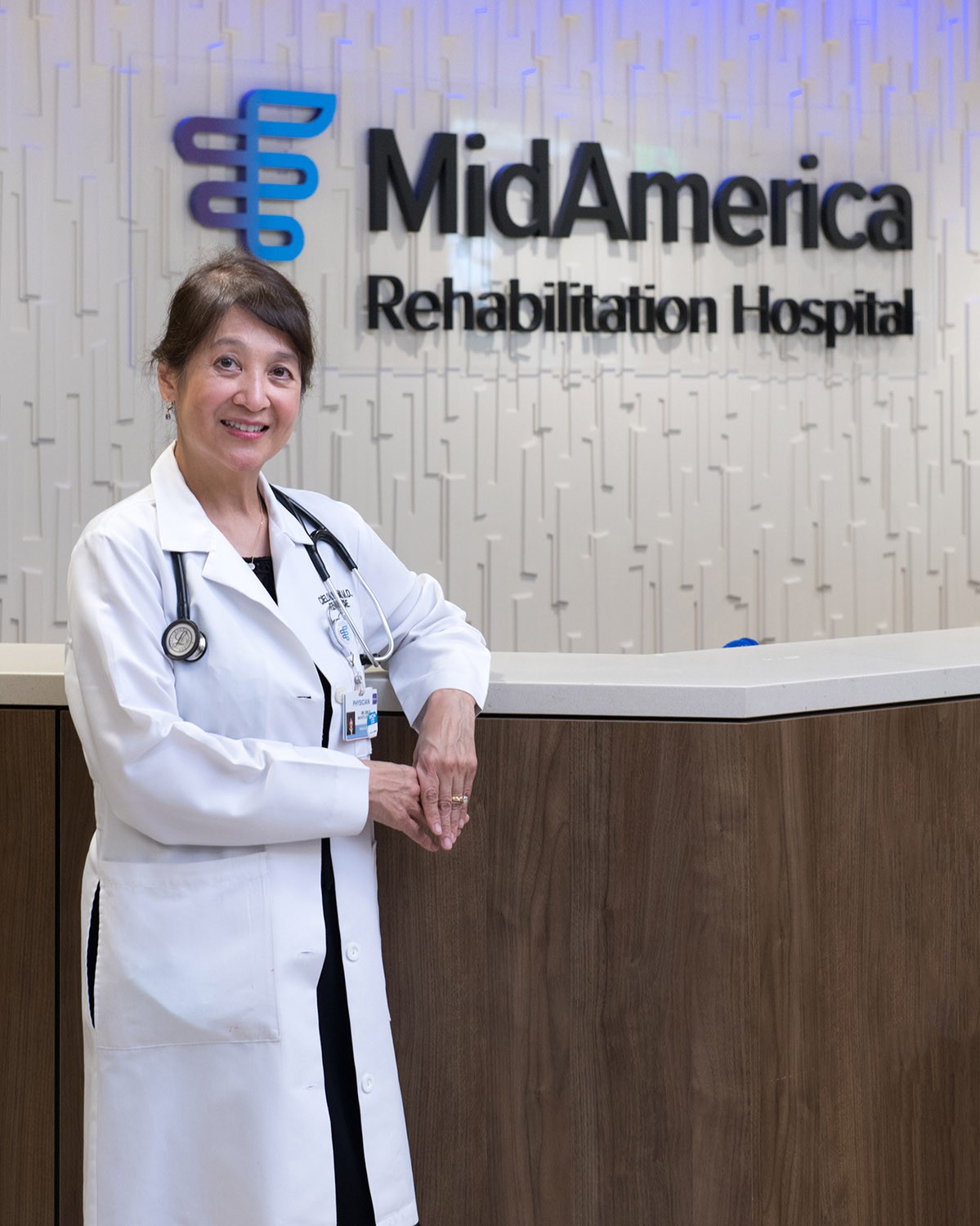
Cielo Navato-Dehning, M.D.
Spinal Cord Injury and Amputee Program Director and MARH Medical Director – Dr. Cielo Navato-Dehning
The first question Dr. Cielo Navato-Dehning typically hears after a patient is admitted for treatment of a spinal cord injury is “Am I going to walk again?” Dr. Navato-Dehning indicated that a spinal cord injury may or may not present with brain trauma. One of her passions is treating spinal cord injuries, as evidenced in her sub-specialty certification through the medical boards for spinal cord injury medicine.
“Spinal cord patients without brain injury are the same person with no personality change; it is just a physical change,” she indicated. “Some are elderly who have fallen and have a mild paralysis which can make them weak initially but as we engage them in therapy and they heal, they get better.”
Other types of spinal cord injuries may involve paralysis, whether temporary or permanent. Dr. Navato-Dehning provides a thorough neurological evaluation and assesses the data to make a prognosis.
“We work with the team and then consult with the family or anyone supportive of the patient and keep the conversations realistic,” she explained.
One of the treatment modalities utilized by Dr. Navato-Dehning is the Intrathecal Baclofen Pump which delivers baclofen directly into the fluid that surrounds the spinal cord and is used to treat severe spasticity. Spasticity occurs when nerves of the brain and/or spinal cord that control movements are injured. When this treatment is applied, it can improve function for the patient, making work, school, and other activities easier.
Another specialty of Dr. Navato-Dehning involves amputee care. When a patient comes to MARH as an amputee, he or she has already had an amputation at an acute hospital and is ready for rehabilitation; this may include the amputation of legs, feet, arms or a combination thereof.
“We see a number of amputees here both through our in-patient and out-patient programs,” indicated Navato-Dehning. “We have to start from scratch with these patients, as it’s more than just a physical change with which they are dealing; it also involves significant pain, psychological issues and a change in function where it may be difficult to move, get dressed, stand or sit. Everyone has their own issues along with the amputation. Our team approach allows us to provide all services to each patient as needed.”
On-going support groups are offered at MARH, not only for amputees and spinal cord patients, but also for brain injury and stroke patients.
“We want our patients to understand they are not out there on their own,” said Dr. Navato-Dehning. “This hospital is not just a one-touch visit; it is a lifetime relationship.”

Sushma Lueder, M.D.
Brain Injury Program – Dr. Sushma Lueder
No matter the injury or illness, the interdisciplinary team approach always applies to each patient. One specialized area of attention involves brain injury, whether traumatic or non-traumatic. In an effort to help restore the brain’s ability to function after such an event, the specialists at MARH coordinate and facilitate the best treatment plan for each patient, working one-on-one to prepare the patient for a safe return home or to the next setting of care.
“The brain injury team includes me, physical, occupational, and speech therapists, nurse, nurse aides, and case managers assigned from all disciplines with experiences in brain injuries,” noted Dr. Sushma Lueder. “Our case managers are exceptional at helping with all phases of planning and what services patients will need not only while they are here but after they leave.”
“Dr Lueder explained that the rehab team has a weekly interdisciplinary team conference to coordinate patient care,” indicated Dr. Lueder.
“The average length of stay is 10-14 days, and from there the patient may either participate in outpatient therapy or home health services,” indicated Dr. Lueder.
In addition to the expertise of the team, MARH relies on the latest in technology, which is used to the fullest potential at the hospital.
“Our therapists are highly trained and know the technology inside and out,” stated Dr. Lueder. “One of our most popular systems is the BITS® (Bioness Integrated Therapy System), which is basically a huge, interactive TV screen that challenges and assesses cognitive, auditory, physical and visual abilities. It can also test reaction times – which can help us determine when a patient is fit to return to driving, for example, as well as test cognitive endurance.”
Like a video game, this software program enables patients to track their therapeutic progress through the BITS technology.
“If you have any potential for success, it will happen here,” stated Dr. Lueder.
Community outings are an integral part of a patient’s recovery. Team members would take patients on outings to see how they respond to a different environment, navigate aisles and even pay for items. During the pandemic, however, this activity is currently simulated in our REAL therapy gym, which has a mini grocery store. In some cases, once a patient becomes more independent, they can be moved from their hospital room to our “Independent Living Apartment” where they can experience a home-like environment.
Dr. Lueder also emphasized the focus on communicating with the families.
“Our team is excellent at helping them understand the situation and be realistic about expectations, not only at the time of discharge but also several months down the road,” commented Dr. Lueder.
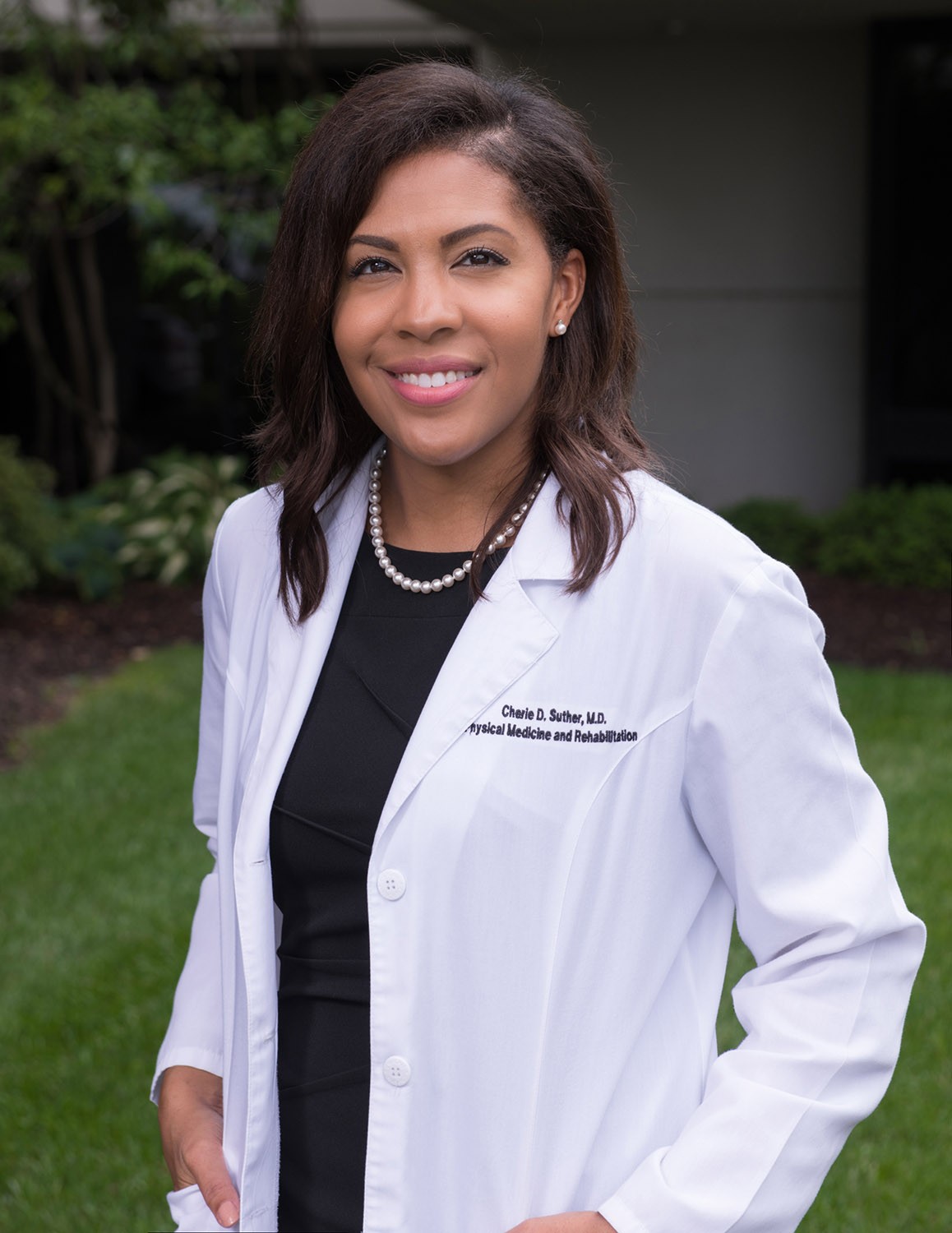
Cherie Suther, M.D.
Stroke Program Director – Dr. Cherie Suther
“One of the best things about MARH is the patients we get to treat. We really want to be able to help those with neurological injuries who have suffered severe functional decline as a result of those injuries. Patients who qualify for our level of care can present a challenge, but a facility like ours is really the best option in the journey to restoring their function.”
The issue, however, is that not every patient qualifies for that level of care. Not everyone can easily tolerate three hours of therapy daily nor do they need all of the provided disciplines.
“We welcome the more challenging patients so that we can provide the best therapeutic approach to help meet their recovery goals. The benefits of their full participation in our intense program help them get the most out of their inpatient rehabilitation stay.”
Among the many therapies available, Dr. Suther highlighted the Bioness device. This device helps patients regain mobility and function by using electrical stimulation to activate muscles in the upper and lower extremities. For example, the Bioness L300 Foot Drop System has a gait sensor that adapts to changes in walking speed and terrain. It then senses deficits in order to provide the necessary movement.
“Our therapists use a variety of technologies unique to a facility like ours,” noted Dr. Suther. “Between the brain, stroke and spinal cord patients, the modalities and devices we use often overlap. It is so rewarding when patients see their own improvement.”
Dr. Suther also credits the Certified Rehabilitation Nurses who have undergone specialized rehabilitation certification for acute settings who can address unique problems of diagnoses as related to stroke, as well as to brain injuries and spinal cord patients.
“They are also highly trained in skin integrity preservation and wound care,” stressed Dr. Suther.
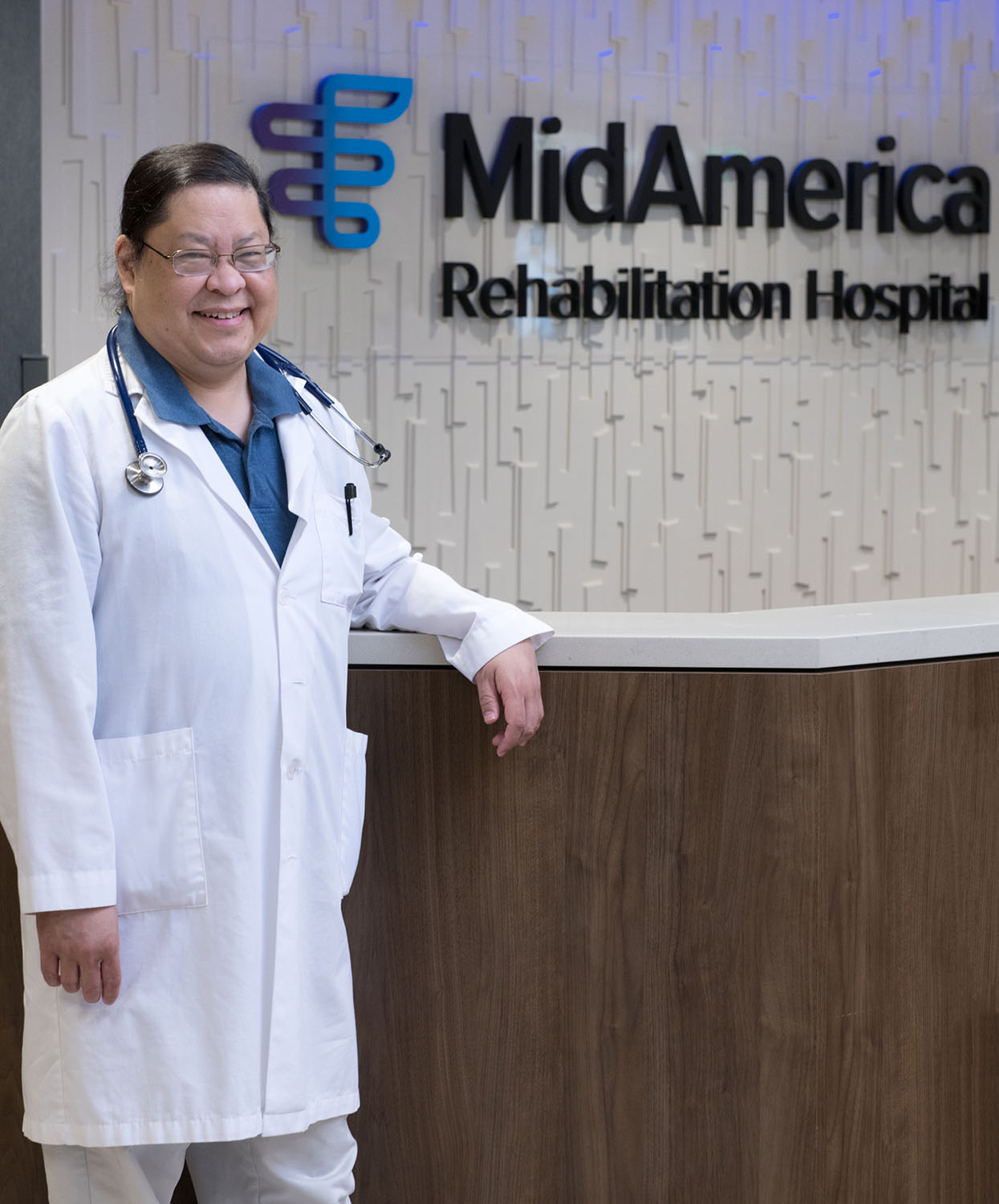
Nick Navato, D.O.
Caring for a body that now works differently.
Bringing a patient to his or her highest functioning potential is always the goal at MARH. The experts here are committed to helping patients with everyday activities, symptom management and reaching their intended targets. No two patients are alike and no two patients have the exact same goals, but for the professionals at MARH, the overall feeling at the end of the day remains consistent.
“There are moments when I visit with patients that remind us of why we are here,” reflected Kiehl. “It’s a great feeling to know we have made such an impact on their lives.”

